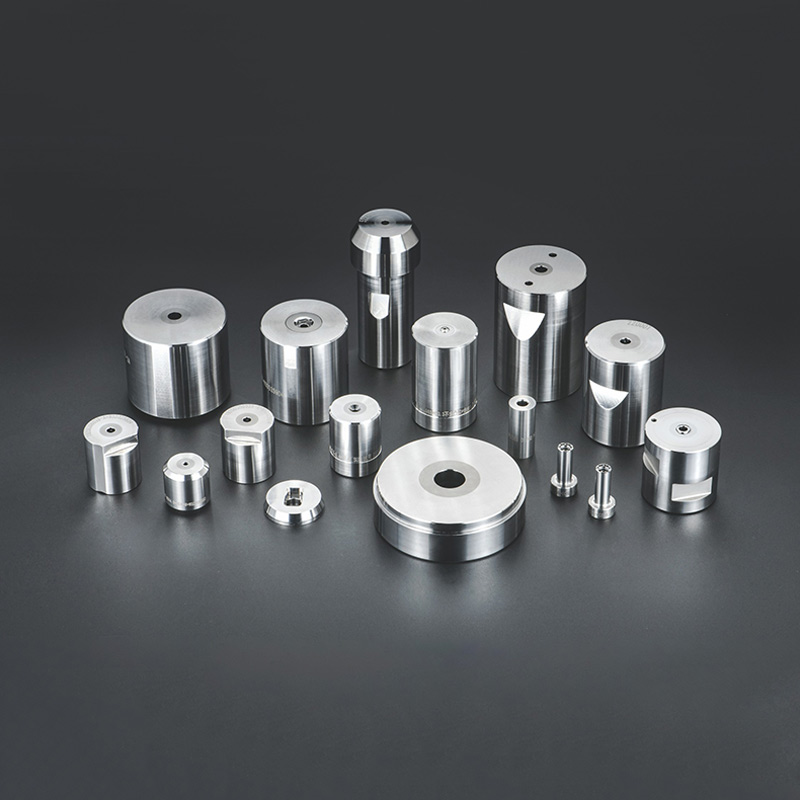Carbide Dies: Properties, Applications, and Maintenance
What Are Carbide Dies?
Carbide dies are precision tooling components manufactured from Tungsten Carbide, a composite material consisting of Tungsten Carbide particles bonded with a metallic binder, typically cobalt (Co) or nickel (Ni). These dies exhibit exceptional hardness (HRA 90-94), wear resistance (10-100x longer lifespan than steel dies), and compressive strength (400-700 ksi), making them ideal for high-volume forming operations. The material's modulus of elasticity ranges between 60-100 Mpsi, ensuring minimal deflection under load. Common grades include C2 (6% Co binder) for general applications and C10 (10% Co binder) for improved toughness in impact-heavy processes.
Key Characteristics:
Hardness: 90-94 HRA (Rockwell A scale), equivalent to 1500-2000 HV (Vickers)
Thermal Stability: Maintains dimensional stability up to 600°C (1112°F)
Surface Finish: Achievable Ra 0.05-0.2 μm with diamond polishing
Thermal Expansion: 5.5-6.2 μm/m·°C (20-400°C range)
Density: 14-15 g/cm³, approximately 2x heavier than steel

Applications of Carbide Dies
Carbide dies serve critical functions across multiple industries due to their superior performance characteristics:
Wire Drawing
In wire manufacturing, carbide dies maintain tolerances of ±0.0001" for diameters ranging from 0.001" to 0.5". They enable drawing speeds up to 3,000 ft/min for copper wire and 1,500 ft/min for high-carbon steel wire. The dies' internal geometry typically features:
Approach angle: 12-24°
Bearing length: 30-50% of wire diameter
Back relief: 1.5-3°
Fastener Production
For cold heading applications, carbide dies withstand forming pressures exceeding 300 ksi during bolt and screw manufacturing. They demonstrate:
Die life of 1-5 million parts between regrinds
Surface finish retention below 0.8 μm Ra after 500k cycles
Dimensional stability within 0.0005" over production runs
Tube and Pipe Manufacturing
In pilger mill operations, carbide dies maintain wall thickness tolerances of ±0.005" for stainless steel tubes up to 6" OD. They exhibit:
50-80% longer service life than tool steel in high-temperature (300-500°C) environments
Resistance to galling when processing titanium and nickel alloys
Capability to maintain circularity within 0.1% of diameter
Other Specialized Applications
Extrusion Dies: For aluminum profiles with complex cross-sections, achieving surface speeds of 20-100 m/min
Powder Compaction: In pharmaceutical tablet presses, maintaining ±0.1% weight consistency
Electrode Manufacturing: For EDM wire production with diameters down to 0.004" ±0.00005"
Maintenance Procedures for Carbide Dies
Proper maintenance extends carbide die life and ensures consistent product quality:
Cleaning Protocol
Perform ultrasonic cleaning every 50-100 operating hours using:
Alkaline solutions (pH 9-11) at 40-60°C (104-140°F)
Ultrasonic frequency: 25-40 kHz
Duration: 5-10 minutes per cleaning cycle
Follow with isopropyl alcohol rinse and forced air drying at ≤80°C (176°F).
Inspection Methods
Implement regular inspections using:
Optical comparators with 50x magnification for profile verification
Surface roughness testers (cutoff length 0.8 mm, evaluation length 4 mm)
Digital micrometers with 0.00005" resolution for dimensional checks
Dye penetrant testing (sensitivity Level 2 per ASTM E1417) for crack detection
Storage Requirements
Store carbide dies in:
Climate-controlled environments (20-25°C, 40-60% RH)
Individual protective cases with anti-corrosion VCI paper
Vertical orientation to prevent dimensional distortion
Reconditioning Techniques
When wear exceeds 0.001" dimensional deviation or surface roughness surpasses 1.6 μm Ra:
Diamond grind with 320-600 grit wheels at 1500-3000 RPM
Electrolytic polishing for critical surfaces (current density 0.5-1.5 A/cm²)
Laser texturing for specialized surface finishes (pulse duration 10-100 ns)
Handling Precautions
Always:
Use nylon-coated tools for installation/removal
Maintain cleanroom conditions (Class 1000 or better) for precision dies
Apply dry film lubricants (MoS2 or WS2) for storage periods >30 days











